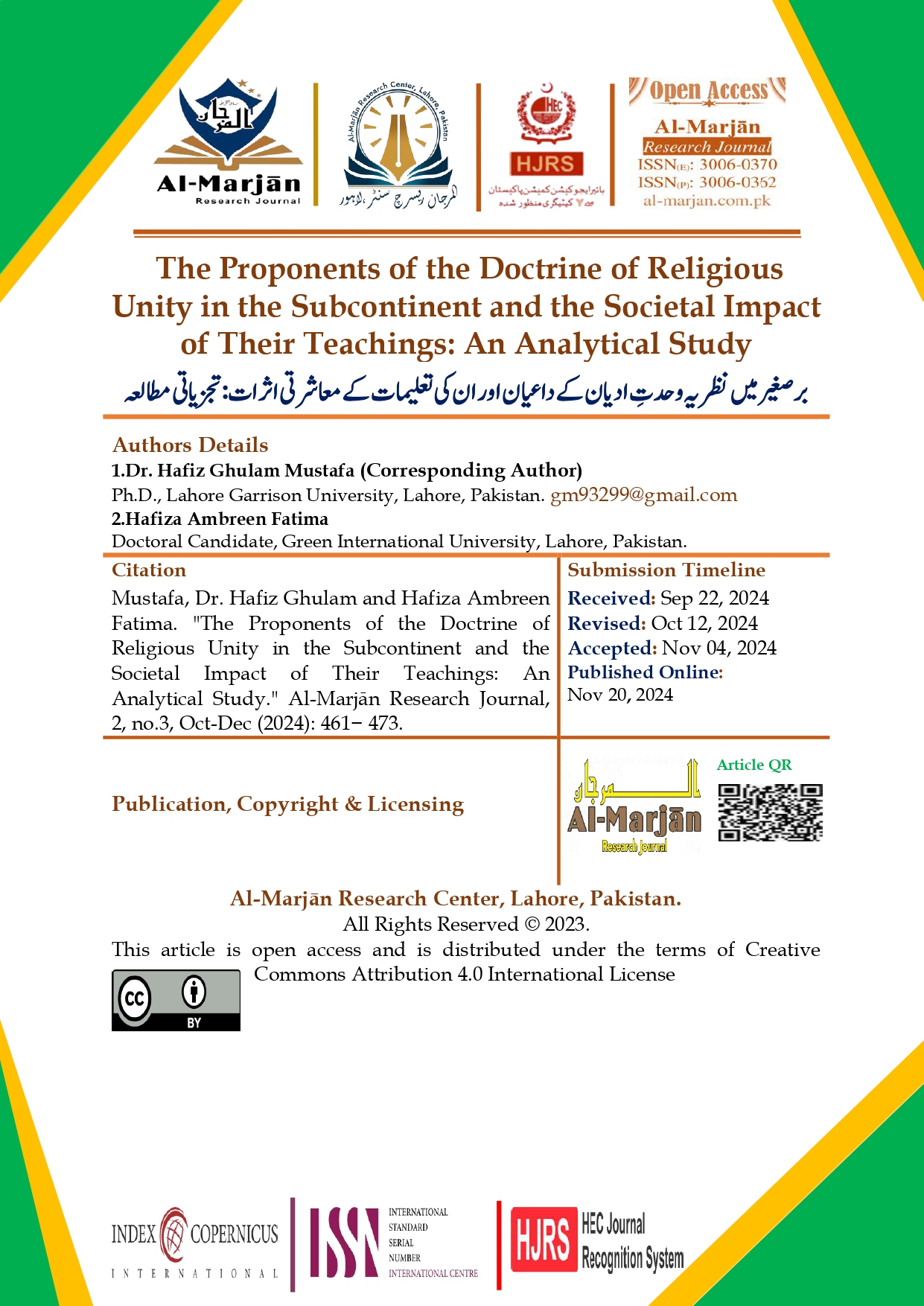The Proponents of the Doctrine of Religious Unity in the Subcontinent and the Societal Impact of Their Teachings: An Analytical Study
برصغیر میں نظریہ وحدتِ ادیان کے داعیان اور ان کی تعلیمات کے معاشرتی اثرات: تجزیاتی مطالعہ
DOI:
https://doi.org/10.1234/2pk60738Keywords:
Religious Unity, Indian Subcontinent, Islam, Syncretism, Interfaith MovementsAbstract
The religious history of the Indian subcontinent reveals a consistent pattern of interfaith movements, among which the doctrine of Wahdat-e-Adyān (Unity of Religions) holds a prominent place. Before the advent of Islam, the Indian society was mired in spiritual misguidance, idol worship, and socio-religious excesses. With the arrival of Islam, a new phase of ethical and religious reformation began. However, over the centuries, particularly from the Mughal period onwards, various reformers and religious preachers attempted to merge elements of different faiths—especially Islam, Hinduism, Christianity, and Buddhism—under the banner of religious unity. This study explores the ideological underpinnings and societal consequences of this doctrine within the subcontinent. It analyzes how figures such as Akbar, Guru Nanak, Dara Shikoh, Bhagat Kabir, Sheikh Abdullah Shattari, and Dadu Dayal tried to present a composite religious philosophy that blurred the unique identity of Islam. The research evaluates the motivations behind these movements—whether political, social, or philosophical—and the enduring influence these ideas have had on subsequent generations. In the modern era, global attempts to homogenize religions under interfaith harmony often echo the same ideals, subtly promoting the dilution of Islamic identity. This paper concludes by highlighting the urgent need to revive and reinforce the distinctiveness of Islamic teachings in order to counter contemporary spiritual confusion. Only a firm adherence to authentic Islamic doctrines can protect future generations from the doctrinal ambiguities introduced by the philosophy of religious unity.
Downloads





































